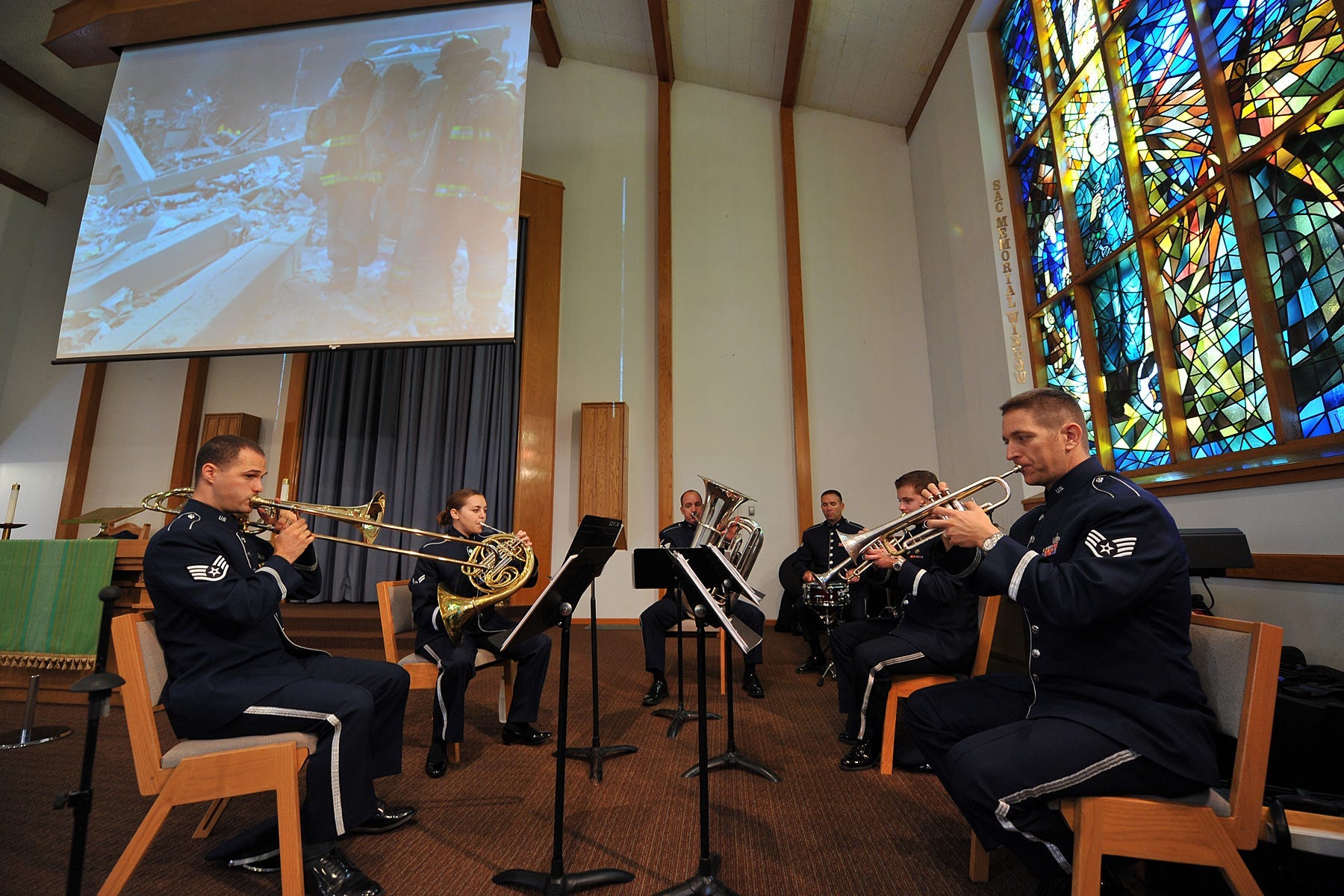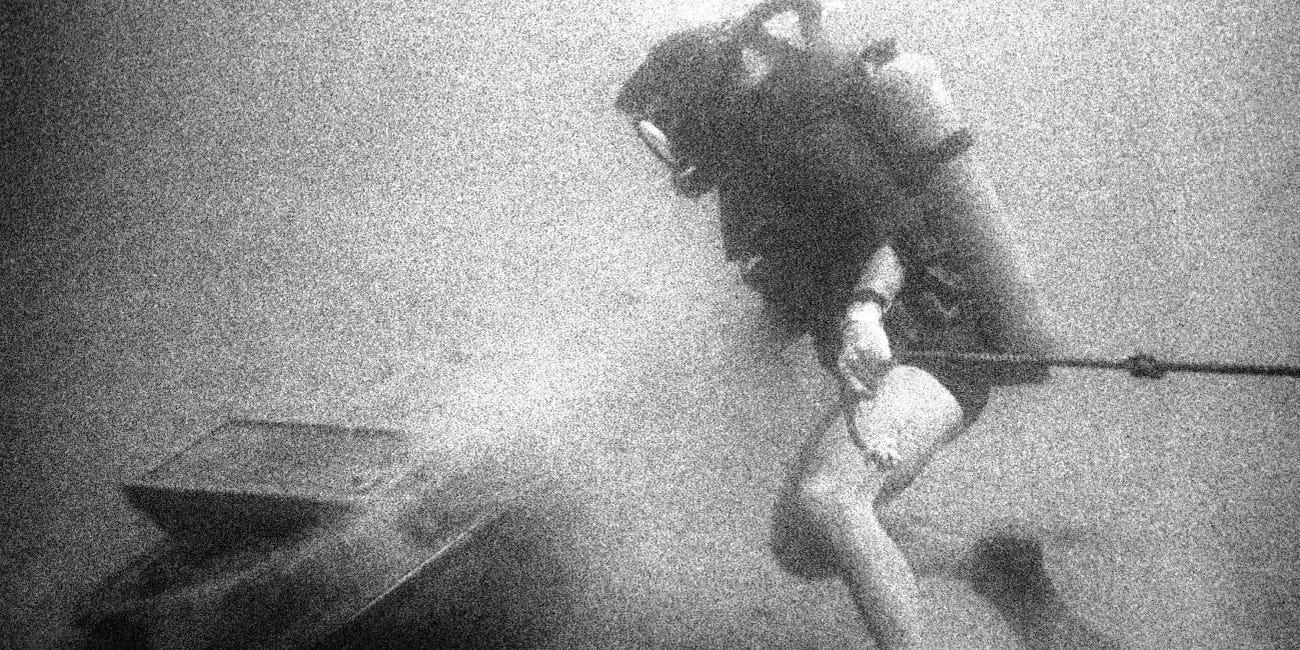See the Beautiful Stained Glass at the U.S. Air Force's Mushroom Cloud Chapel
But the chapel's depictions of nuclear war contain one little mistake

by STEVE WEINTZ
Glass has a curious relationship with nuclear energy. That’s why it’s fitting to find a stained-glass depiction of a mushroom cloud in a U.S. Air Force chapel.
The Strategic Air Command Chapel at Offutt Air Force Base in Omaha, Nebraska, is a testament to how the military viewed nuclear war in the 1950s. The chapel’s stained-glass windows feature nuclear explosions, bomber formations and a red telephone symbolizing the Washington-to-Moscow hotline.
It might be a little tacky. It was the 1950s, and America hadn’t quite reckoned with the nuclear megadeath World War III would likely produce.
But the images have a remarkable beauty to them, and you can’t fault bomber pilots for wanting a place of peace and introspection before what could very well be a suicide mission into the Soviet Union.
The glass is also appropriate. The world’s first atomic explosion fused the desert sand of New Mexico into a rare radioactive green glass called trinitite. Glass is so elementally stable that scientists study ancient Egyptian glass with an eye towards long-term storage of radioactive waste.
But it is odd that the windows contain a factual error—one that might actually allude to a goofed-up bomb drop.
Light, color and spirit
For more than 1,000 years, stained-glass windows have illuminated places of worship and remembrance. Although the most famous of such windows date to medieval churches and cathedrals, stained glass remains popular today as a beautiful, exalting visual medium.
Spiritual and earthly warfare often provided the subject matter for church windows. From images of warrior kings and saints doing battle against dark powers, to memorials for fallen warriors in the 20th century, holy places have used the the potent beauty of colored light.
In late 1958, Gen. Thomas Power, chief of the Strategic Air Command, suggested the flying branch create a fitting memorial to SAC airmen killed in the line of duty. The memorial was to include new stained-glass windows for the SAC chapel at Offutt Air Force Base.
By all accounts, Power was not a man whose suggestions airmen took lightly. Within three years, collections taken at SAC base chapels paid for—and delivered—the Command Chapel’s new windows.
The four pieces of stained-glass art featured SAC’s four air forces, and its 72 divisions and wings.
One window dedicated to the Eighth Air Force celebrated four of its major accomplishments.
The Eighth Air Force, nicknamed the “Mighty Eighth,” delivered the heaviest airborne blows against the German army during World War II. The first mission occurred over Rouen, France in August 1942. The window marks this feat with three pale B-17 bombers partially obscuring an outline of France, traced on yellow glass.
During the Korean War, the Eighth Air Force’s 27th Fighter Escort Wing shot down a lot of MiGs. This history is rendered in colored glass next to an outline of the Korean peninsula.
Another commemoration on the window calls out SAC’s global reach with an image of Lucky Lady II, the B-50 bomber which flew the first non-stop aerial circumnavigation of the globe in 1949. An air-refueling boom of pale glass connects the bomber to its air tanker.
The wrong stuff
But the most interesting and eye-opening image is of a mushroom cloud and the name “Eniwetok.” The cloud, of course, symbolizes an atomic bomb explosion. Eniwetok is a Pacific atoll where the United States tested nuclear weapons during the 1940s and 1950s.
The image commemorates the Eighth Air Force’s historical place as America’s first nuclear bomber force. However, the Command Chapel’s memorial window names the wrong island.
Contrary to the account on the chapel windows, no SAC bomber participated in the 1948 Operation Sandstone tests on Eniwetok Atoll. No air drops occurred, either. All three test explosions blew up at the top of towers built on the islands.
Instead, the Pentagon reassigned the 509th Composite Group—responsible for the atomic bombings of Japan—to the Eighth Air Force after the war.
Based at Roswell, New Mexico, the 509th was the only unit certified to deliver nuclear weapons at the time, which led to it becoming the original nucleus of the Strategic Air Command.
The 509th’s first post-war nuclear mission involved dropping the “Able” test bomb on Bikini—another Pacific atoll—in 1946 as part of Operation Crossroads. It didn’t go well. The bomb missed its target by more than 1,000 feet, which screwed up the weapons-effects experiments.
The air crew received an official drubbing, but the problem may have been a bomb fin which bent during descent.
It’s possible the windows’ designers had Operation Ivy’s “King” test shot in mind—a whopping 500-kiloton fission bomb dropped on Eniwetok by a B-36 in November 1952. But “Mike,” the other Operation Ivy shot, was too big and heavy to fly. The world’s first successful hydrogen bomb filled a four-story building.
Perhaps “Bikini” seemed too risque for a pious memorial in an Air Force chapel.
Read more:









